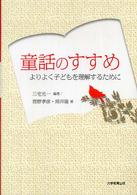Full Description
The first comprehensive work in English on the three major regional styles of Uzbek women's dance -
Ferghana, Khiva and Bukhara - and their broader Silk Road cultural connections, from folklore roots
to contemporary stage dance.
The book surveys the remarkable development from the earliest manifestations in ancient civilizations
to a sequestered existence under Islam; from patronage under Soviet power to a place of pride for Uzbek nationhood.
It considers the role that immigration had to play on the development of the dances; how women boldly challenged societal gender roles to perform in public; how both material culture and the natural world manifest in the dance; and it illuminates the innovations of pioneering choreographers who drew from Central Asian folk traditions, gestures and aesthetics - not Russian ballet - to first shape modern Uzbek stage dance.
Written by the first American dancer invited to study in Uzbekistan, this book offers insight into the once-hidden world of Uzbek women's dance.
Contents
List of Illustrations ix
Foreword xi
Preface xiii
Acknowledgments xvi
Notes on Translation, Transliteration, and Honorifics xviii
Timeline xx
PART ONE HIDDEN ROOTS 1
1 The Goddess and the Dancing Boys 3
2 The Primacy of Rhythm 27
PART TWO THE DANCE ZONES 41
3 Ferghana Dance 43
4 Bukhara and Samarkand 55
5 Khorezm Dance 83
PART THREE FROM THE ICHKARI TO THE CONCERT STAGE 97
6 Mentors and Martyrs 99
7 Cross-Pollination: Moscow and Paris 111
8 From Revolution to Evolution 121
PART FOUR TERROR AND WAR 135
9 Uprooted: Koreans and Crimean Tatars 137
10 The War Front and the Home Front 149
PART FIVE THE ARRIVAL OF SPRING 159
11 The Blossoming of the Bakhor Ensemble 161
12 Constructing Karakalpak Dance 179
13 Kizlarkhon Dusmukhamedova—"Queen of All the Girls" 189
PART SIX FROM RED STAR TO CRESCENT MOON 197
14 New Celebrations for a New Nation 199
15 Conclusion: Lessons of Resilience 209
Glossary of Dance Related Terms 214
Bibliography 217
Index 236







